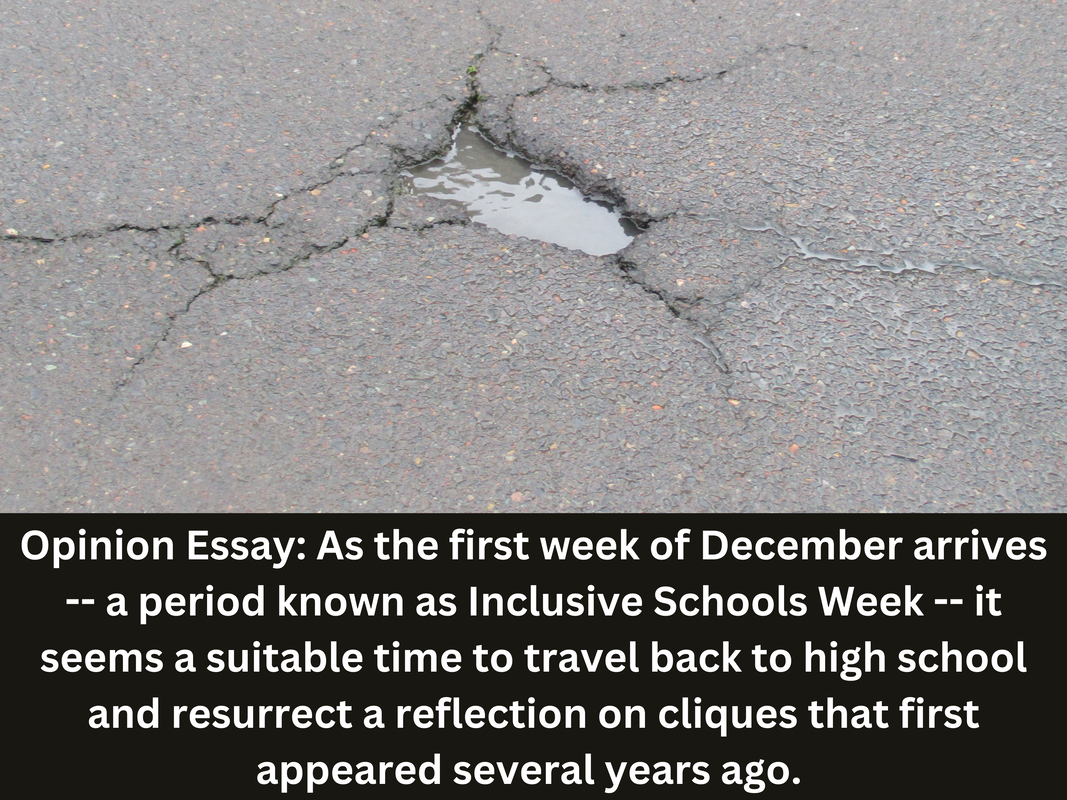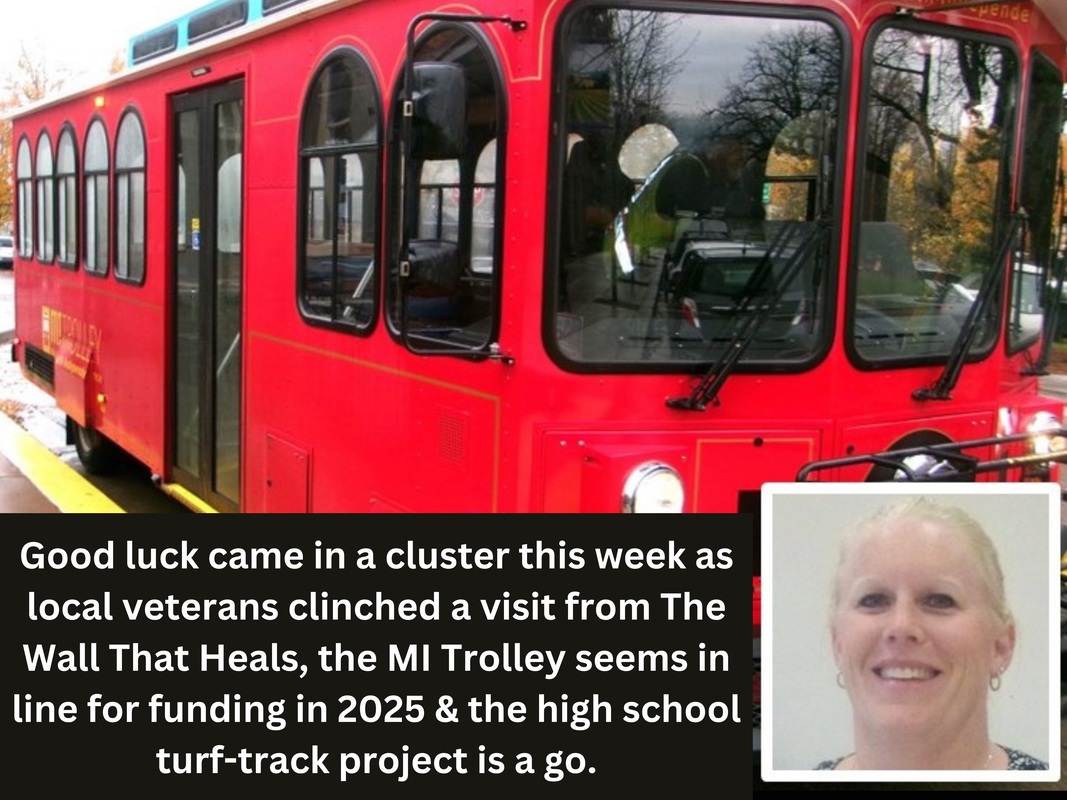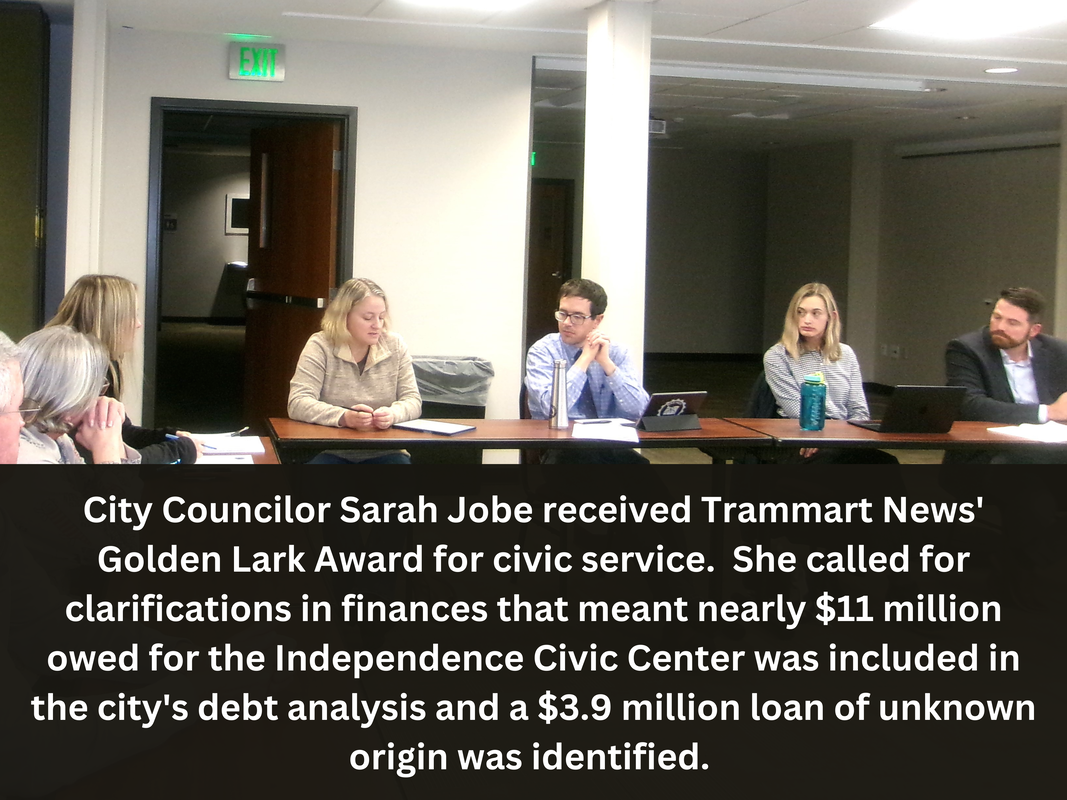
By Anne Scheck
Trammart News Service
Almost immediately after his recent re-election, Polk County Treasurer Steve Milligan announced tentative plans to file a contempt of court complaint against the county he is serving – asserting that he’s not being allowed to perform the duties of his office, in violation of a recent court ruling.
But the allegation is untrue, according to the county’s board of commissioners. “He is completely free to do his job,” said Craig Pope, the board chair, in answer to an inquiry about the exchange that took place between Milligan and the board this week.
Reading directly from a copy of the court record he had in his hand, Milligan told the commissioners that the county “must allow and facilitate the duly elected treasurer to discharge the powers, duties and prerogatives of the treasurer as required by the Oregon Constitution and statutes.”
Polk County employs a finance director and personnel with assigned roles for managing the county revenue, according to county documents.
The conflict appears to hinge on the interpretation of a state statute that describes – somewhat ambiguously, it seems – the responsibilities of county treasurers. The Oregon Constitution appears even less definitive. References center on generic descriptions of bookkeeping
The dispute arose this week during a meeting of the county commissioners, in which Milligan – who received a wide-margin vote returning him to the position – reminded commissioners that he’d also won a lawsuit against Polk County about the issue, shortly before the November election.
This past fall, a Yamhill County judge quashed an ordinance adopted by the county that required many of the county’s financial responsibilities to be permanently carried out by staff; A copy of the recent court decision indicates that the county doesn’t have the authority to enforce such an action.
“We are examining that,” said Commissioner Jeremy Gordon, who advised Milligan that there would be a “fresh start.”
Over the years, new legislation, rulemaking and litigation have impacted the governance of counties, including finance and accounting practices, according to the League of Oregon Counties. To stay abreast of the increasing complexity, professional financial administrators began partially fulfilling the domain of elected treasurers.
Some of the overlap has yet to be sorted out, according to past reports on the issue.
One of Milligan’s concerns also seems to be his office space. The treasurer’s office is apart from the financial-support staff, who are on an upper floor of the county courthouse. Milligan’s office is in the basement.
“I need access to the office upstairs,” Milligan said.
Pope told him that all records are digital and that his office has been equipped with the necessary technology. Milligan replied that even his keycard for the office couldn’t open the door, to which Pope responded that the code had probably expired due to lack of use. “We built a brand new office for you,” Pope said.
“This fight isn’t over,” Milligan said in a brief interview following the meeting. ▪

By Lance Masterson
For Trammart News Service
To say Shawn Boyes is proficient in martial arts is an understatement. Not only is Boyes a third-degree black belt in Shao-Lin Kempo, he also owns Central Martial Arts in Independence, where he is its chief instructor.
Quite an accomplishment, especially for someone who had to overcome debilitating fear before he could even begin training.
“When I started this, I actually went to a Gold’s Gym, bought a membership and I was so afraid of people I wouldn’t walk in,” Boyes said. “Instead, I’d sit in the parking lot.”
But love for family helped get him out of his car and into a studio.
“When I found Shao-Lin Kempo, I was actually looking for something for my son who has ADHD,” he said. “But he didn’t want to do it by himself. So I started taking classes with him and found that I liked it.”
The pair studied in Lebanon under grandmaster Robert Pearlswig of the American Schools of Shao-Lin Kempo. Boyes was (and is) an enthusiastic student.
“I didn’t just look at the moves. I wanted to know more. It’s like, okay, how does this move work? Why does it work? What are we doing here? And as an orange belt, I was asking those questions. Questions more advanced people are usually asking,” Boyes said. “So, back when I was younger in the system, I was asking those tough questions. I think my grandmaster saw that.”
This inquisitiveness led Boyes to a nuts-and-bolts understanding of Shao-Lin Kempo.
“Lot of people don’t get into that. It’s like, there’s a punch. Come block the punch,” he said. “I’m like, what’s the angle? What’s the trajectory? What’s the speed? What am I going to do? Wait ’til the last moment? My mind’s always analyzing things like that.”
Pearlswig was so impressed that he made Boyes – a purple belt at the time – an offer that forced him to confront his fear.
“That’s why when grandmaster said he was going to make me a teacher, I looked at him kind of fuzzy. Like, okay, that’s not going to work,” Boyes said.
Until it did.
Shao-Lin Kempo “helped me get over my fear, for the most part, of being in front of people,” he added.
Boyes’ teaching career began while working on the railroad, his job at the time. Pulling double duty continued for a while.
“Once I got to black belt, I let my old job go and decided this was the way for me,” he said. “I really love teaching.”
Boyes also loves the quid pro quo relationship between student effort and student results.
“So, if you come in thinking of this as if it was a sport, like a once a week thing, that’s what you’re going to get out of it. That’s okay if that’s what you want,” Boyes said. “If you go into it and you put everything you have into it … well, it’s made me grow both mentally and physically. I’m at a place mentally where I never thought I’d ever be in my life. There’s always something to work on. But I’m a way different person than what I was when I started this.”
As for long-time student Abigail Rollins, what she wanted was an exercise routine that wasn’t boring or predictable.
“Way back, when I was in junior high school, I took a year or so of martial arts. I quit. And I always regretted it because I felt I should have stuck with it,” Rollins said.
Rollins teaches dental hygiene for Oregon Institute of Technology in Salem. One day 10-plus years ago she stopped in to talk to Boyes about Shao-Lin Kempo. She signed up and has been a student ever since.
“Shawn seemed very nice, personable,” she said of that first meeting.
He also eased concerns she had about her age. Rollins was in her mid-50s.
“Shawn said, ‘That’s okay. We take all-comers. Give it a try and see what you think’,” she said. “So I started there, and I really enjoyed that it works on your confidence, on your balance, and that you have to memorize things.”
There’s also a chance to move through the ranks. Rollins was a brown belt when Boyes pulled her aside.
“One day he said, well, I think you’re ready for the black belt test. And I said, oh, my god,” she said. “When he told me that he thought I was ready … I knew, I mean it was in the back of my mind. I had joined the black belt club where you pay a fee and then they stick with you until you get to black.”
Her path to black belt was personalized with age and physical dexterity taken into consideration.
“I’m not a 16-year-old or an 18-year-old who can fly through the air, kicking. I may never be able to fly, and I told him that when I got ready to take the test,” she said. “But that’s not the point, and I think that’s what's so good about it. The point is to do your best, and to encompass the whole art of it, and I really enjoy that.”
Rollins is an exception as far as demographics go, too. Of the 100 students enrolled, only about 20 are adults. Most of these are men. Central Martial Arts offers women-only classes, however. The school also prides itself on delivering quality instruction.
“This isn’t a cookie-cutter school. We really care about our students,” Boyes said. “Students really have to earn their ranks when they go through. We hold them accountable to what they do.”
Central Martial Arts is at 386 So. Main St. in Independence. Call Boyes at 503-837-0414 for more information.
Boyes purchased the business more than 10 years ago. He had about 30 students at that time. Enrollment has nearly tripled in the years since.
The studio is associated with American Schools of Shao-Lin Kempo. Grandmaster Pearlswig reportedly began his martial arts training in the early 1960’s. ▪

By Anne Scheck
Opinion Essay on Leadership
Trammart News Service
Coming up is "Inclusive Schools Week," and if you've never heard of it, you're not alone. Neither had I. But for many years now, the first week in December has been set aside as a time to support school programs that honor differences. In this special period for encouraging inclusiveness, it seemed appropriate to dust off an essay from years ago. Some special individuals have an innate ability to ignore social barriers and sidestep inner circles -- and they show us how.
Meet Nanette.
Queen Bees can be the center of a power-tripping cluster, administering eyerolls, dispensing judgments. Adulthood, it has been said, is like grown-up middle school, where the “in group” always gets to rule.
But life offers a few walloping lessons along the way to let us know that even a Miss Popularity on the pages of our yearbooks may not be so easy to pigeonhole – if they’re lucky enough not to drink that intoxicating nectar and succumb. If they are like Nanette.
I know this not just because I knew Nanette but also because, by now, I’ve known a few women a whole lot like her. In fact, I’d never have known Nanette to be anything but a classic queen bee except that she did two things which deeply affected my polar-opposite life from hers as an adolescent. She was unfailingly kind to me, and she was nuts about a boy who was a complete “Poindexter,” the name young females back then gave to awkward guys who were smart but seemingly charmless.
Chased by the star athletes and imitated by the cheerleaders, Nanette chose to date someone considered one of the biggest Poindexters in our youthful orbit. Also, she got a job in the kitchen of a local hospital where I worked as a teenager, along with a few others from our school. Nanette showed such leadership skill that she was put in charge of us. And for reasons I never understood, I seemed to be one of her favorites.
She was so naturally beautiful that a relatively high percentage of the male medical staff noticed her – often waiting till she took her place as a cafeteria server before they grabbed their trays to make their way down the line.
Her Poindexter boyfriend got into an engineering college near Boston, which seemed as far away as the planet Mars to me. But Nanette wanted to go to that city, too. And, since she had this classic queen bee background – modern two-story house, late-model cars – her parents presumably could afford it. Nanette looked at colleges in Boston, and she settled on one. It was a small women’s college in the heart of the city. I remember girls at my high school who snickered about her following a guy to Boston that none of them even would have dated. And going to an all-woman college! How fun could that be?
Raven-haired Nanette, with a smile as radiant as a movie star’s, who looked like she should be on a New York fashion runway, flew off to Boston, graduated from college, and married the Poindexter.
We lost touch, of course. I was told she became what’s now somewhat irreverently referred to as a suburban mom, raising a family somewhere in the Midwest or on the Eastern Seaboard or in Idaho.
When I took my own daughter hither-and-yon years ago to look at university campuses, some of those trips were torturous for us both. One snooty college in Pennsylvania made me sorry I ever dragged my daughter away from our hotel in Philadelphia; A highly regarded college in another part of the country was so homogenous it made my daughter think of an academic island, where she simply couldn’t see herself. I was about to give up when I thought of Nanette, and, on what seemed a whim to my entire family, we flew off to Boston to visit the college Nanette had chosen, so long ago.
We saw MIT from a boat on the Charles River, and I thought it must be where Poindexter went. He and Nanette, from the vantage point of a tour boat all those years later, now seemed so far ahead of the traditional curve of my past.
And I thought back to how Nanette looked during passing periods in the halls of my old high school, as if she belonged to a rare and elite group, those who win the genetic lottery in so many ways. But if she felt superior, as so many of these queen bees are portrayed in coming-of-age films, it only looked that way with Nanette. She made quite unexpected decisions. For example, she made no secret of the fact that she liked hanging out with me on those grimy work breaks.
My daughter received her university degree several years ago from Nanette’s alma mater. A famous celebrity spoke at the graduation. The sky over Boston was bright blue as Pomp & Circumstance played.
I thought of Nanette again. It must have been somewhat like Nanette’s graduation, the ending to her college years at the same institution. And, so, I decided to find Nanette.
I was going to write to her by email to tell her, “You may not remember me, but I remember you and your choices – and my daughter ended up going to same college you did, all those years ago.” But, as it turns out, I never got to send that message. Oh, it was easy to find out about Nanette. She’d kept the name I knew her by.
But she died many years ago, never reaching the late middle age that proved such a prosperous period in my life; Never knowing, as I do, the comfort of finally making it to the dubious label of senior citizen.
From her obituary, it sounds like she had cancer. Who knows what other curve balls life threw at her?
She probably never lost her perfect smile and impeccable fashion sense. But what she had in the highest quantity was a value system, long before the term came into wide use. She elevated the status of a Poindexter guy with unshakable affection and belief and she unfailingly said hello to me in school corridors when she was surrounded by her admiring acolytes, who appeared to regard me like discarded chewing gum.
It seemed remarkable at the time. Now it seems like a character trait with the scarcity of a rare earth metal.
Sometimes a life gets changed by unexpected encounters. In this case, it was a self-actualizing young woman who looked like a prom princess but who wasn’t afraid to have an out-of-step boyfriend or to share break time with a food-service co-worker, 10 rungs below her on the high-school hierarchy. What a discovery for two girls on the same wavelength, neither one quite what they appeared destined to be, and both on their way. ▪













 RSS Feed
RSS Feed